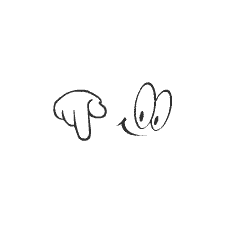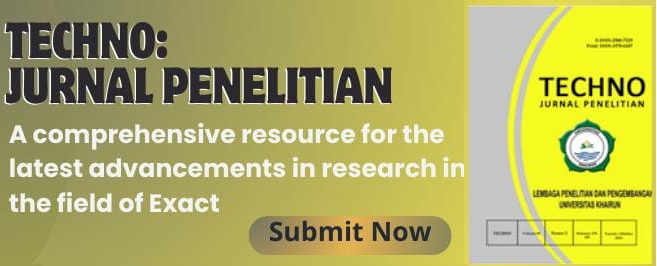MICROALGAE POTENTIAL TO DECREASING DISSOLVED AMONIA CONCENTRATION (NH3) ON LIQUID WASTE OF UREA FERTILIZER FACTORY
Abstract
The purpose of this research to analyzing the abilities of microalgae from various water treatment processes to improving chemical properties (pH, dissolved NH3, BOD, NO3-) the liquid waste of urea fertilizer factory. The sampling method has used the grab sampling method for a certain period. Microalgae sources are obtained from various water treatment processes and mixed with waste of water at a dose of 300 mg L-1. The results showed the source of microalgae clarifier was significantly different in reducing dissolved ammonia concentration, pH, and nitrate. Based on the results of regression analysis and correlation showed that the microalgae population was partially correlated with pH, BOD, nitrate, and dissolved ammonia of 1.61%, 87.70%, 55.38%, and 9.63%. While the concentration of dissolved ammonia significantly affected pH, BOD, nitrate, and microalgae biomass growth of 84.40%.
Full Text:
PDFReferences
Adawiyah, R. 2011. Diversity of phytoplankton in Lake Tasikardi is related to the content of carbon dioxide and nitrogen. Thesis at Syarif Hidayatullah State Islamic University, Jakarta (Unpublished).
Ariyanti, D. and N.A. Handayani. 2010. Microalgae as a source of renewable biomass: Cultivation and Harvesting Techniques. Ejournal UNDIP 06 (2): 35-40.
Badriyah, L., A. R. Putra, D. Saputra, I. Faiqoh and A. H. Nugraha. 2013. Efficient use of biofloculation techniques in harvesting microalgae Spirullina sp. Species. and Bptryoccus braunii to optimize biodiesel production. Thesis at Bogor Agricultural Institute, Bogor (Unpublished).
Djunaedi, A. 2015. Biomass production of microalgae (Tetraselmis chuii) with different harvesting systems. Tropical Marine Journal. 18 (2): 107-111.
Fadilah, R. and H. D. Ariesyady. 2012. Analysis of the abundance and diversity of microalgae in the stabilization ponds of wastewater treatment plants based on conventional and molecular biological analysis (case study: IPAL Bojongsoang). Thesis at Bandung Institute of Technology, Bandung (Unpublished).
Faradilla, A. and A. R. Juwita. 2011. Utilization of fertilizer factory wastewater with high ammonia levels as microalgae culture media for the acquisition of vegetable oil as biodiesel fuel. Diponegoro University, Semarang (Unpublished).
Hastuti, Y. P. et al. 2010. Profile of traditional farms: soil texture, total N-inorganic and producing bacteria. Indonesian Aquaculture Journal. 9 (2): 119-126.
Hilwatullisan, A. Syakdani, and Husaini. 2014. Lecture Module on Waste Management Engineering. Sriwijaya State Polytechnic, Palembang
Istiyanie, D. 2011. Utilization of CO2 emissions from coal power plants in microalgae-based domestic wastewater treatment. Thesis at Postgraduate UI, Depok (Unpublished).
Kawaroe, M. 2011. Cultivation of Schenedesmus sp. in the waste water medium Schenedesmus sp. Biota. 16 (2): 193-199.
Mahapatra, D.M., and H.N. Chamakya. 2013. Euglena sp. as a suitable source of lipids for potential use as a biofuel and sustainable wastewater treatment. J. Appl Phycol DOI 01 (1): 10811-10813.
Maharsyah, T., M. Lutfi, W.A. Nugroho. 2013. Effectiveness of Addition of Growth Bacteria (Azospirillum sp.) Plant in increasing the growth of microalgae (Chlorella sp.) In tofu liquid waste media after anaerobic process. Journal of Tropical Agriculture Engineering and Biosystems. 1 (3): 258-264.
Makarevicience, V., V. Andruleviciute, V. Skorupskaite, and J. Kasperoviciene. 2011. Cultivation of microalgae Chlorella sp. and Scenedesmus sp. as a potentional biofuel feedstock. Environmental Research, Engineering and Management 03 (57): 21-27.
Mulyanto, A., T. Handayani. 2015. Fixation of carbon dioxide emissions by cultivating microalgae using nutrients from the dairy industry's wastewater. Journal of Industrial Research 09 (1): 13-21.
Prasetyo, B. and E. N. Kusumaningrum. 2011. Microalgae and chemical physical conditions of Situ Babakan, Jagakarsa, South Jakarta. In: 2011 FMIPA-UT National Seminar.
Rina, P.A., Philip, and Sumiarsa. 2012. The abundance of several types of microalgae in atoms in the waters of Gumilamo-Magaliho Island, North Halmahera. Journal of Tropical Marine Science and Technology 4 (1): 97-106.
Said, N.I... 2011. Waste water treatment technology with biofilm processes immersed. Journal of Environmental Technology 01 (2): 101-113.
Salmariza. 2012. Utilization of Activated Sludge Mud Waste Industry in Crumb Rubber Industry as Adsorbent. Journal of Industrial Research 6 (2): 175-182.
Valentina, A.E., S.S.Miswadi. 2012. Utilization of water hyacinth charcoal in reducing turbidity, COD, BOD in well water. Indo. J. Chem Sci.2 (2): 84-89
DOI: https://doi.org/10.33387/tjp.v8i1.977
Refbacks
- There are currently no refbacks.
Copyright (c) 2019 TECHNO: JURNAL PENELITIAN
-------------------------------------------------------------------------------------------------------------------------------------------------------------------
-------------------------------------------------------------------------------------------------------------------------------------------------------------------
TECHNO: Jurnal Penelitian
Published by: LPPM Universitas Khairun
Addres : Jalan Yusuf Abdurrahman Kampus II Unkhair, Kelurahan Gambesi, 97722 Kecamatan Kota Ternate Selatan, Provinsi Maluku Utara, Email: techno@unkhair.ac.id | URL: http://ejournal.unkhair.ac.id/index.php/Techno
Techno Jurnal Penelitian is licensed under a Creative Commons Attribution-NonCommercial 4.0 International License.


























